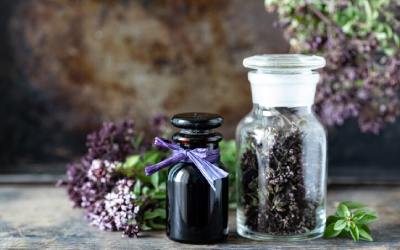Synthetic Fragrances Scent is the sole sense that directly communicates with the limbic system in the brain. This implies it’s more likely to be linked to the feelings you were experiencing the moment you processed the scent. Scent has been related to mood and memory in various scientific investigations currently underway.
But are you remotely aware of the ingredients in your perfume?
Most perfumes include an ingredient list that includes what appear to be natural ingredients, such as organic essential oils and plant-based compounds, along with an additional ingredient called “fragrance.” Well, when you see this ambiguous word, it’s likely expected you to take it as a red flag.
Labels with the word “fragrance” in the ingredient section usually conceal a slew of frightening chemicals and pollutants that are hazardous to both internal and external health.
It’s crucial to remember that the cosmetic industry has a lot of latitude in terms of what they may put in “fragrance” because they aren’t required to disclose the constituent substances by law. As a result, there is a fundamental lack of transparency surrounding traditional organic perfume compositions.
This lack of transparency could be harming your health, as research has connected major medical disorders to chemicals commonly found in ordinary premium perfumes.
Because your skin absorbs what you put on it, it’s critical to be mindful of the chemicals and toxins lurking in seemingly harmless products. Our essential oil perfume range utilizes freshening essential oils and floral fragrances instead of traditional perfumes because of the health problems surrounding them.
These substances have a heavenly flower scent and many advantages for the skin, without any of the negative side effects. We’ll look at some of the facts regarding what the term “fragrance” actually means, as well as some plant-based alternatives.
 So, what are some of the potentially dangerous chemicals found in traditional perfumes? There are up to 60 chemicals and hazardous substances that belong under the “fragrance” category, all of which are kept under wraps from competitors because cosmetic corporations want to safeguard their “company secrets.” Our skin and interior health, however, remain vulnerable. Perfumes incorporate phthalates, a chemical that is used to give cosmetics a rubbery and flexible texture.
So, what are some of the potentially dangerous chemicals found in traditional perfumes? There are up to 60 chemicals and hazardous substances that belong under the “fragrance” category, all of which are kept under wraps from competitors because cosmetic corporations want to safeguard their “company secrets.” Our skin and interior health, however, remain vulnerable. Perfumes incorporate phthalates, a chemical that is used to give cosmetics a rubbery and flexible texture.
Diethyl phthalate, or DEP, is a phthalate present in perfume that has been related to inner endocrine disruption and hormone imbalance. In addition, a 2007 study indicated that greater levels of phthalates in adult males’ urine were associated with greater waist size and insulin resistance. Benzene derivatives, a vanilla-like artificial aroma that has been shown to irritate the respiratory system, are commonly included in synthetic fragrances.
Acetone, benzaldehyde, benzyl acetate, benzyl alcohol, camphor, ethanol, ethyl acetate, limonene, linalool, and methylene chloride are some of the other compounds contained in scent. All of these toxins have a commonality factor: they can cause central nervous system illnesses, respiratory issues, dizziness, and exhaustion.
The bottom line is that traditional perfumes can cause everything from gaining weight to hormonal imbalance to respiratory distress, plus a handful of other uninvestigated ailments in between.
Chemicals administered topically enter our bloodstream, organs, and cells. Just because a person doesn’t have an adverse response or discomfort when they wear a traditional perfume doesn’t mean they aren’t getting exposed to the fat-soluble chemicals that will accumulate in the body for a long time. It’s preferable to take your time with scent, keeping in mind that what you put on your skin ends up in your body.
How to Identify Non-Toxic Synthetic Fragrances in Products
Here’s a perfume insider tip: perfume compositions are typically manufactured with a combination of synthetic and organic chemicals, so study labels carefully. Companies utilize synthetic fragrances as fillers in otherwise “natural” items because they are cheaper to add and create than natural perfume alternatives.
 Synthetic fragrances are generally created in a lab with the help of petroleum and solvents like hexane. Fragrances that are non-toxic are complex molecules made up of aromatic raw materials. Fruit and plant oils, essential oils, florals, and hydrosols are all derived from natural sources using distillation and extraction. Fruit and plant oils, essential oils, florals, and hydrosols are all derived from natural sources using distillation and extraction methods.
Synthetic fragrances are generally created in a lab with the help of petroleum and solvents like hexane. Fragrances that are non-toxic are complex molecules made up of aromatic raw materials. Fruit and plant oils, essential oils, florals, and hydrosols are all derived from natural sources using distillation and extraction. Fruit and plant oils, essential oils, florals, and hydrosols are all derived from natural sources using distillation and extraction methods.
Thus, It’s ideal to follow the less-is-more concept when it comes to what you want to put on your skin.
Existing solutions frequently include a wide range of chemically produced perfumes that operate as fillers, thus taking up space in the container while providing no additional skin benefits. Aranyam’s Floral perfume & Attar perfume oil range does more than just add fragrance; they actively target skin issues like oxidative stress and clogged pores.
Thus, we should prefer fewer but high in quality components with several functions over cheap and poisonous ingredients that do not nourish, protect, or prevent our skin.



